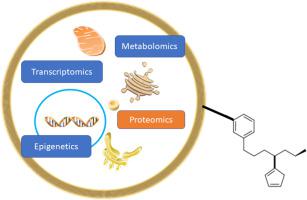Comparative Biochemistry and Physiology D: Genomics & Proteomics ( IF 3 ) Pub Date : 2020-10-17 , DOI: 10.1016/j.cbd.2020.100751 Xuefang Liang , Christopher J. Martyniuk , Denina B.D. Simmons

|
Proteomics plays a significant role in discerning the effects of chemical exposures in animal taxa. Multi-omics applications have become more pervasive in toxicology, however questions remain about whether proteomics is being utilized by the community to its full potential – are we placing too much stock in transcriptomics and other omics approaches for developing adverse outcome pathways? Proteins are more relevant than transcripts because they are direct mediators of the resulting phenotype. There is also rarely perfect stoichiometry between transcript and protein abundance and transcript abundance may not accurately predict physiologic response. Proteins direct all levels of phenotype: structural proteins dictate physical form, enzymes catalyze biochemical reactions, and proteins act as signaling proteins, antibodies, transporters, ion pumps, and transcription factors to control gene expression. Molecular initiating events (MIEs) of AOPs predominantly occur at the level of the protein (e.g. ligand-receptor binding) and proteomics can elucidate novel MIEs and mapping KEs in AOPs. This critical review highlights the need for proteomics in multi-omics studies in environmental toxicology and outlines steps required for inclusion and wider acceptance in chemical risk assessment. We also present case studies of multi-omics approaches that utilize proteomics and discuss some of the challenges and opportunities for proteomics in comparative ecotoxicology. Our intention is not to minimize the importance of other omics technologies, as each has strengths and limitations, but rather to encourage researchers to consider proteomics-based methods in multi-omics studies and AOP development.
中文翻译:

我们是否忘记了多组学生态毒理学中的“蛋白质组学”?
蛋白质组学在辨别动物类群中化学暴露的影响方面起着重要作用。多元组学在毒理学领域的应用已变得越来越普遍,但是仍然存在有关社区是否充分利用蛋白质组学的潜力的疑问–我们是否在转录组学和其他组学方法中投入过多的资源来开发不利的结果途径?蛋白质比转录本更重要,因为它们是所产生表型的直接介体。转录本和蛋白质丰度之间也很少有完美的化学计量关系,而转录本丰度可能无法准确预测生理反应。蛋白质指导所有水平的表型:结构蛋白质决定物理形式,酶催化生化反应,蛋白质充当信号蛋白,抗体,转运蛋白,离子泵,和转录因子来控制基因表达。AOP的分子启动事件(MIE)主要发生在蛋白质水平(例如配体-受体结合),蛋白质组学可以阐明AOP中的新型MIE并绘制KE。这篇重要的评论强调了在环境毒理学的多组学研究中蛋白质组学的必要性,并概述了在化学风险评估中纳入和更广泛接受所需的步骤。我们还将介绍利用蛋白质组学的多组学方法的案例研究,并讨论比较生态毒理学中蛋白质组学的一些挑战和机遇。我们的意图不是要最小化其他组学技术的重要性,因为每个组学技术都有其优势和局限性,而是鼓励研究人员在多组学研究和AOP开发中考虑基于蛋白质组学的方法。


























 京公网安备 11010802027423号
京公网安备 11010802027423号